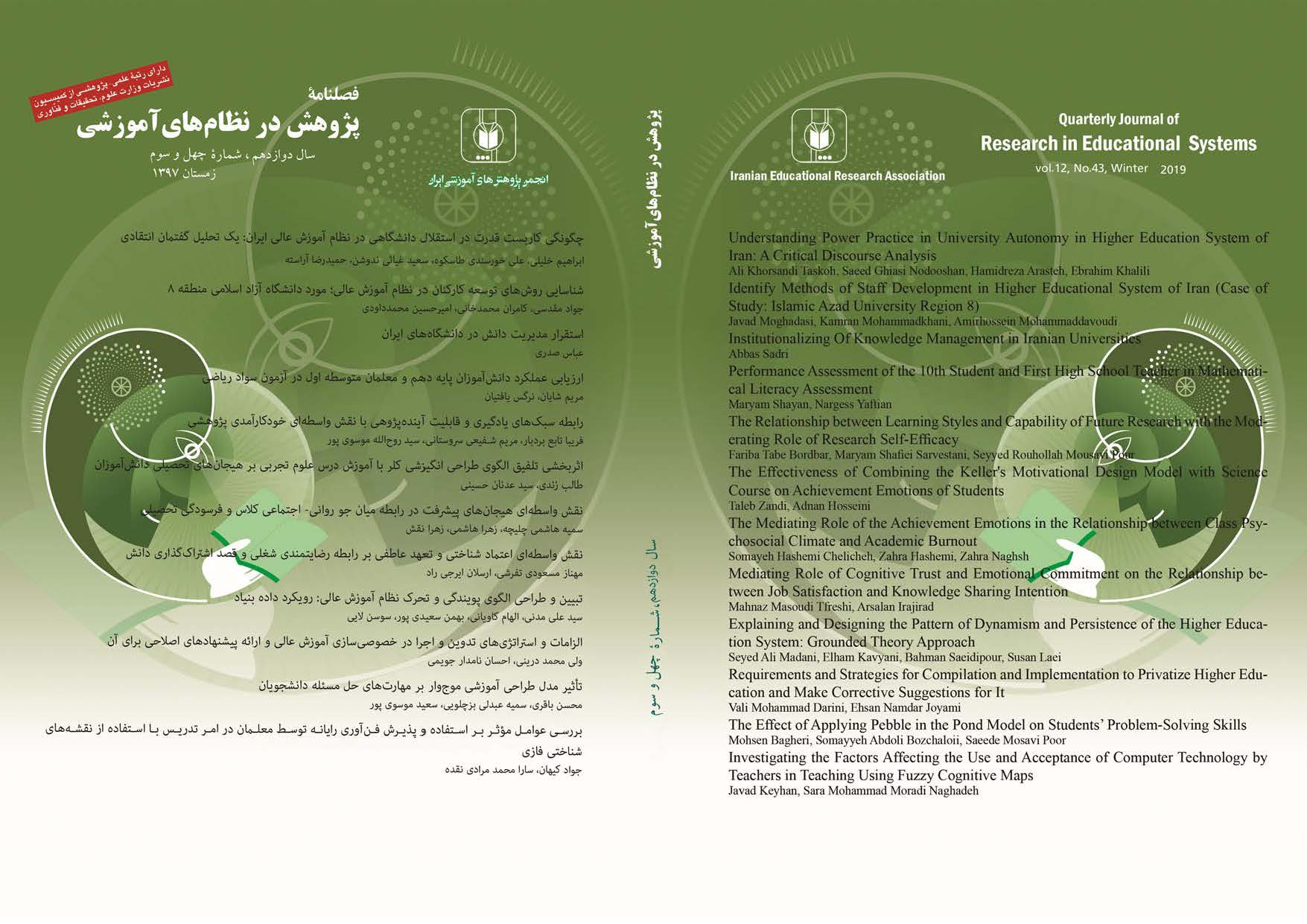Document Type : Original Article
Authors
1 Educational Management, Kermanshah Branch, Islamic Azad University, Kermanshah, Iran
2 Department of Educational Sciences, Kermanshah Branch, Islamic Azad University, Kermanshah, Iran.
3 Associate Professor of Literature and Humanities, Kermanshah Branch, Islamic Azad University, Kermanshah, Iran
4 Assistant Professor, Faculty of Literature and Human Sciences, Kermanshah Branch, Islamic Azad University, Kermanshah, Iran
Abstract
Even though there is a general agreement on the importance of the role of Persistence in higher education, a model that uniquely assesses the role and impact of Dynamism and Persistence on universities has not been presented and no explicit explanation has been made. Considering the pivotal role of the Dynamism and Persistence of higher education in the framework of the qualitative approach and applying the research methodology of Grounded theory, we are going to explain the Dynamism and Persistence model of the higher education system in the universities. Semi-structured interviews were conducted in order to collect information and use a targeted sampling method with 18 experts familiar with the topics of higher education. Data analysis was performed in three stages: open coding, axial coding and selective coding. The results show that 390 codes or the initial concept of interviews, as well as 40 concepts and 23 categories, are presented in the form of a paradigmatic model, including the development of multiple capacities and capabilities of higher education as the core category and the causative conditions (qualified faculty, diversity Educational and research programs, development of applied research, combined training capacity, university interaction with industries, flexible and practical curriculum), underlying factors (multiple educational facilities, motivation of professors, student attraction at all levels, appropriate social communication, development of online systems ), Interventional conditions (attraction and promotion, student empowerment, Q. Development strategies, appropriate image of universities), strategies (foreign students, human resource empowerment, new training capacities), post-secondary factors (individual-organizational levels).
Keywords

